The Maybrick Will -- The Crucial Key to a Shabby Hoax
Melvin Harris
I first saw the 'Maybrick Diary' long after 'the experts and advisors'
had had their say. But before seeing it I made three predictions; it would
be written in a simple iron-gall ink, which could not be dated; it would
be written in an old journal with its front pages torn out; the handwriting
would not match the known handwriting of James Maybrick. With time all
three forecasts proved correct, but when first shown this document I was
assured by Paul Feldman that no significant examples of Maybrick's handwriting
existed. There was just one signature on his marriage lines, but nothing
else:--"We have checked."
But dogmatic claims mean nothing, so I made my own checks; these brought
to light James Maybrick's Will. It became evident at once that there was
no possible connection between the scrawl in the 'Diary' and the authentic
and distinctive penmanship of Maybrick. Document examiners here and in
the USA agreed. So how did 'the true believers' keep up the pretence?
Robert Smith, for one, first simply brushed the Will to one side as
of no importance. In his dealings with 'The Sunday Times' this Will was
not even mentioned, indeed the newspaper knew nothing of it until their
Legal Department consulted me. By that time Andy Aliffe had uncovered the
Certified Copy of the Will, which confirmed James Maybrick's text in every
small detail. But when faced with the Will, Smith then insisted that it
was a forgery and differed from the 'original Will seen by Alexander MacDougall
and included in his book of 1891.' This line was endorsed by Shirley Harrison
and Paul Feldman, despite the fact that I'd demonstrated that MacDougall's
text was nothing but a grossly faulty transcript. Later searches proved
that the source of that text was just a newspaper report!... For all fair-minded
thinkers, here now, is the evidence that proves the authenticity of the
Maybrick Will and shows the worthlessness of all attempts made to denigrate
it.
PREMISE: That the MacDougall 'Will' is a corrupt version of a
newspaper text and no more; that his text is distinguished by typographical
features found only in that newspaper setting; that a second Will
taken to Grant stage is an impossibility.
1. On April 25 1889 James Maybrick wrote out a Will which was
witnessed by George Davidson and George Smith. He was in good health at
that time and in his office; Paul Feldman's claim that he was at home and
ill in bed, is false and is contradicted by the Trial evidence. Now, no
executors were named in that Will, so on his death it could not be dealt
with by straightforward Probate. Under the Acts in force at that date the
settlement of Wills fell into these four main categories:--
A. Probate, proper.
B. Letters of Administration with the Will anexed.
C. Letters of Administration, pure and simple.
D. Administration de bonis non.
Since the two brothers, Thomas and Michael, were named in the Will
as trustees, they applied for a Grant of Administration under category
B. This would give them the powers of Universal Legatees in Trust, but
it also saddled them with long-term and unwanted, responsibilities. So
it was the type of Will that made things awkward for them. It would have
suited them far better to have a straightforward Will, naming executors,
but they had to cope with the only Will that existed, and that was that!
On 29th July 1889 that Will of April was endorsed on the back with the
details of the Grant of Administration. Thus the two-page Will (one large
sheet folded) carried two distinct documents written at different dates.
It also carried the official embossed stamp of the High Court; it carried
the signature (in red ink) of the District Registrar T.E. Paget and his
endorsement which stated:--"Affidavit of Search filed"; in other
words, no document in conflict with the Will had been discovered or was
known about.
2. When the Grant of Administration was made, a Certified Copy
of this two-page Will was made as well, and its text included the details
of the Grant as shown on the rear of the original. This copy was faithful
to the Nth degree since it included all the ampersands and idiosyncracies
present in the holograph copy. It was stamped by the Registry on its embossing
machine; it was further stamped twice with the personal handstamp of Registrar
Paget and then initialed by him. So, Paget was in effect saying 'This is
the exact wording of the holograph Will of James Maybrick signed on 25th
April, 1889, as examined by me and passed by me, without challenge, on
the 29th of July 1889': REMEMBER THIS THROUGHOUT.
3. On July 30 1889, the day after the Grant of Administration,
both the 'Liverpool Mercury' and the 'Liverpool Post' printed a verbatim
account of the text of the Will that went to Grant on the previous day.
Its text differs visually simply because it was read out. In short,
the reporter taking it down employed his own regular, standard method
of punctuating. Hence the absence of the ampersands freely used by Maybrick
and the capitalisation differences etc. BUT the text of the newspaper reports
(apart from one word -- an obvious error and of no importance) agree exactly
with the text of the Will at Somerset House and its attendant Certified
Copy. At this point we are entitled to write: QED. And that should be
the end of it.
4. But we have entrenched interests to cope with, so we have
to waste time dealing with MacDougall's blunders. First it can be shown
that MacDougall was innacurate, inconsistent and neglectful when writing
his books. Having absorbed that, now register the fact that MacDougall
was not involved in any way with the Maybrick case until AFTER the verdict
was pronounced. That involvement only dates from August 8th 1889, when
he called for a public meeting to set up a committee of protest: a meeting
that took place at the Cannon Street Hotel on August 13. So, at the earliest,
his active interest began ELEVEN DAYS AFTER THE WILL HAD BEEN PASSED AND
ITS TEXT RELEASED TO THE NEWSPAPERS.
5. Now start from the unchallengeable fact that the clerk making
the Certified Copy supplied a text that agrees in every way with the holograph
Will. Next accept that the newspaper text is based on the holograph Will
and that it contains all the so-called 'missing words' that Feldman,
Smith, and Harrison have been talking about. It is also the sole source
for some few extraneous words about the 'Affidavit of due exeution.' Now
ask: where does MacDougall's text with its missing words come from?
His book text is based on this newspaper text and nothing else. His
text even repeats the one spelling error found in the newspaper, i.e. the
word 'what' in line 4; it should read 'whatever'. It also picks up the
'Affidavit' words which can be found nowhere else. But all the manifold
errors are his, or an assistant's; they do not represent the text of any
Will that ever existed, or, indeed, ever could have existed, as I will
prove. Indeed in his 'NOTICE TO THE READER' MacDougall actually states
that his text is based on newspaper reports. His own Notes are always shown
in italics and initialed. The newspaper extracts are in ordinary type,
as is his Will section on pages 203-204 (1891).
6. The fact that MacDougall saw the Will at a later date is significant
only in the sense that it makes his neglect even more serious. He never
at any time bothered to check the text of the Will he saw, with his corrupt
text. If he had done so he could not have avoided noticing all the missing
words, both in the text of 25 April 1889 and in the later text written
on 29th July 1889. For in his book there are ELEVEN WORDS MISSING from
the solicitors' document written on 29th July. But those 11 words were
present on the Will when read out to the reporters in July. It is
an affront to logic to imagine that words written on this document by
solicitors and known to be present on 29 July 1889, and recorded as
such by a journalist, suddenly went missing.
7. We now have to pose two questions; questions avoided by all
those who have misused the MacDougall text.
QUESTION A. They pretend that MacDougall saw a Will differing from the
extant one. Since the text of the extant Will was vouched for on
July 29th 1889, their plea means that there had to be TWO versions of this
Will in open, side-by-side, existence in 1889. BUT MACDOUGALL DOESN'T SAY
THIS AT ANY TIME, and he is the sort of man who would have jumped at the
chance to make capital out of such a discovery. Neither does anyone else,
around at that time, whether pro or anti Florence, mention such a fantastic
anomaly. It is Paul Feldman alone, who is responsible for this fiction.
QUESTION B. The MacDougall text shows the solicitors' section of July
29th 1889 as integral with the Maybrick section of April 25 1889.
And this is, of course, how it should be and how it is on the Somerset
House holograph and its Certified Copy. How is it possible then, logically
and legally, for two different wills disposing of exactly the same property,
to have been passed for Grant on the same day, to the same Universal
Legatees in Trust and with each of these differing Wills endorsed by
solicitors Layton, Steel, and Springman as the very one passed?
Expand this to consider these details:--that the two brothers had to
be sworn first, before the Grant could be made; that they had to
swear an Affidavit of entitlement and intent; that they had to swear an
Inland Revenue Affidavit and put up a Bond to double the value of the estate
and pay all the fees for these services. How in all logic could they do
this twice over, as the fairy tale about the two Wills demands?
I repeat: how could the Registrar, the Commissioner for Oaths, and the
Solicitors take part in such a meaningless and illegal farce? Just a moment's
thoughts will reveal that it is legally impossible for such a series of
events to have happened.
8. Which brings us to Paul Feldman's latest twist, his malarky
that the 'original Will had an Affidavit of Due Execution attached to it.'
If I describe this as childish invention, take it that I'm being polite!
This looks like a desire to be right at any cost and involves a deliberate
abuse of a snippet of information first found in the newspaper reports
of 30 July 1889. The clerk reading out the Will did no more than provide
the reporters with the name of the official supervising the Grant when
he said:--"Affidavit of due execution filed T.E. Paget, District Registrar."
As reported, this is not punctuated properly, thus it is not separated
from the Granting statement, as it should be. That statement begins:
"At Liverpool on the 29th July..." This can be confirmed by looking
at the holograph and its copy. Even so, it is inexcusable to distort the
meaning of these words, which in fact negate the very idea that
the Will had anything attached to it. They state specifically that the
Affidavit was FILED. Just so; all the Affidavits involved with this Will,
together with the Bond, were filed in the Registry. This was standard
practice and a legal requirement.
In brief, everything on public record does no more than allude to the
standard filing procedures and confirms that the Will never had any other
papers attached to it, since no such attachments were ever needed.
Feldman's conclusion, then, that "the Will that is currently at
Somerset House cannot be the same document that was put forward for probate
on July 29th 1889", can be shown to be nothing but bluster and folly.
Now that the facts are in front of you I ask you to consider the following
questions. Are you really prepared to reject all the evidence now in your
hands? Will you discard the evidence provided by the Registrar and recorded
by the press at the time, in favour of the weird ideas used to rubbish
this Will? Remember, Registrar Paget was in charge at the time; he authorised
the Grant to the brothers on the very paper that I have seen, thus proving
there was no Will in conflict; his verdict was never challenged; and the
Will saw through to Grant stage is there at Somerset House, for anyone
to examine and recognise as a perfectly sound legal document. And it was
this document, and none other, that was further endorsed on the back in
1893.
It is a key document which on its own proves the 'Maybrick Diary'
to be a crude forgery. It cannot be wished away. And no amount of money
or verbal savaging can ever destroy its damning testimony.
Appendix Illustrations
Maybrick Will (Original)
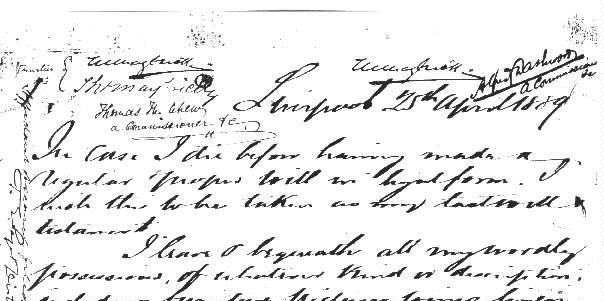

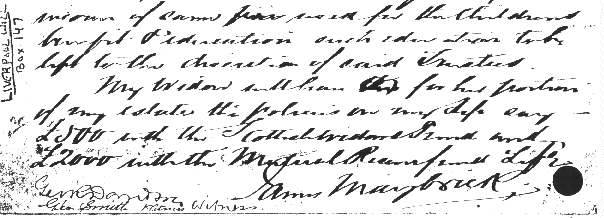 Page 1
Page 1
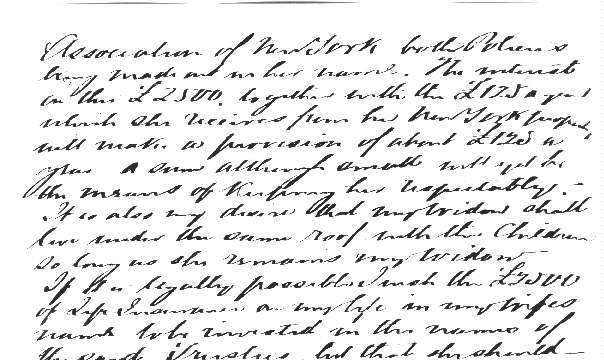
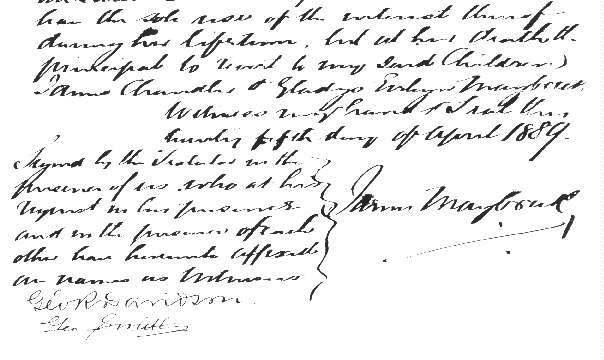 Page 2
Page 2
Maybrick Will (Certified Copy)
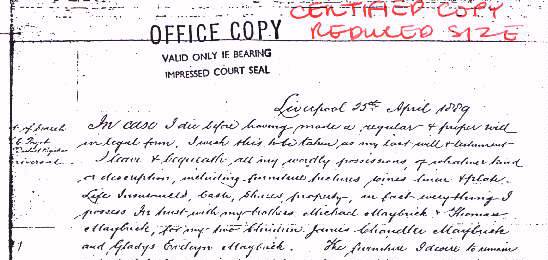
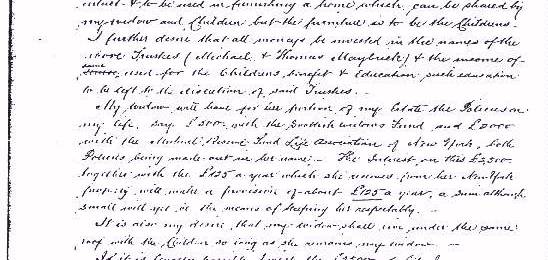
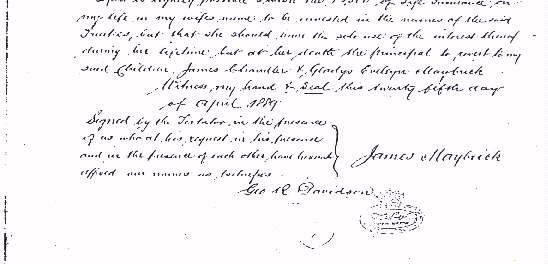
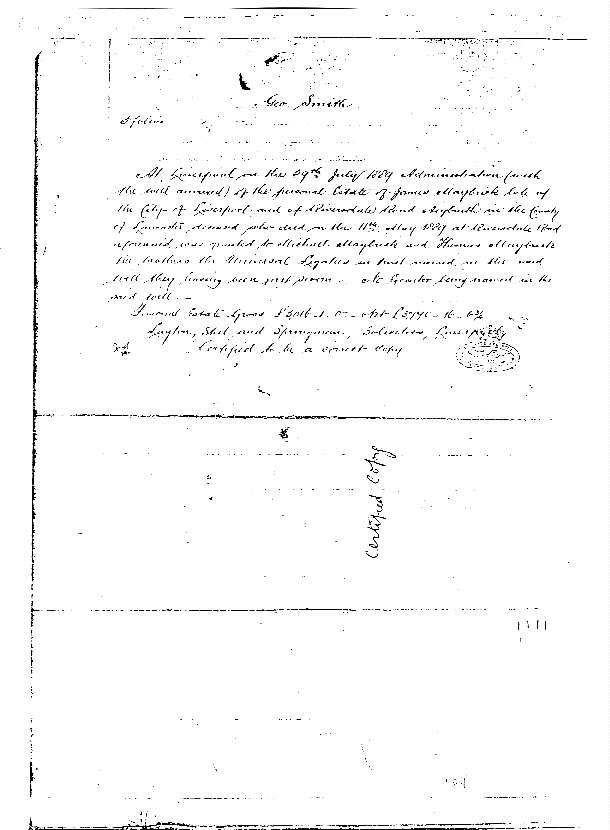
Newspaper Reproductions (With Notes)
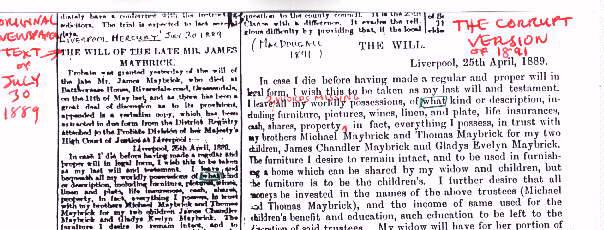
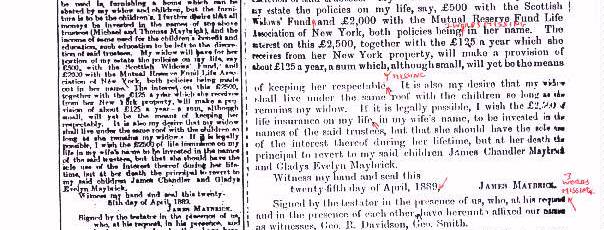
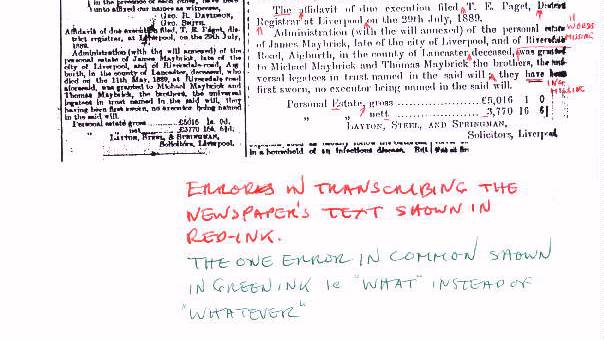
Readers should note that the versions of the Maybrick will printed
in, THIS FRIENDLESS LADY by Nigel Moreland, and THE POISENED LIFE OF FLORENCE
MAYBRICK by Bernard Ryan are both unfortuatley based on the false text
found in Macdougalls book. And the version included in Shirley Harrisons
book is inaccurare and has words missing. Furthermore Shirley Harrisons
claim that in Dec 1888 Maybrick had torn up his will and written a new
one is patently false, and is clealy contridicted by Florence Maybricks
letter to her mother dated 31st Dec 1888.